unknown, but probably neutral; usually lives in roden nests
Pygmephorus Kramer, 1877
Superorder Acariformes » Order Trombidiformes » Suborder Prostigmata » Infraorder Eleutherengona » Hyporder Heterostigmata » Family Pygmephoridae » Genus Pygmephorus
Pygmephorus spinosus Kramer, 1877
Female: Tergite C not covering prodorsumprodorsum:
Dorsal surface of propodosoma.
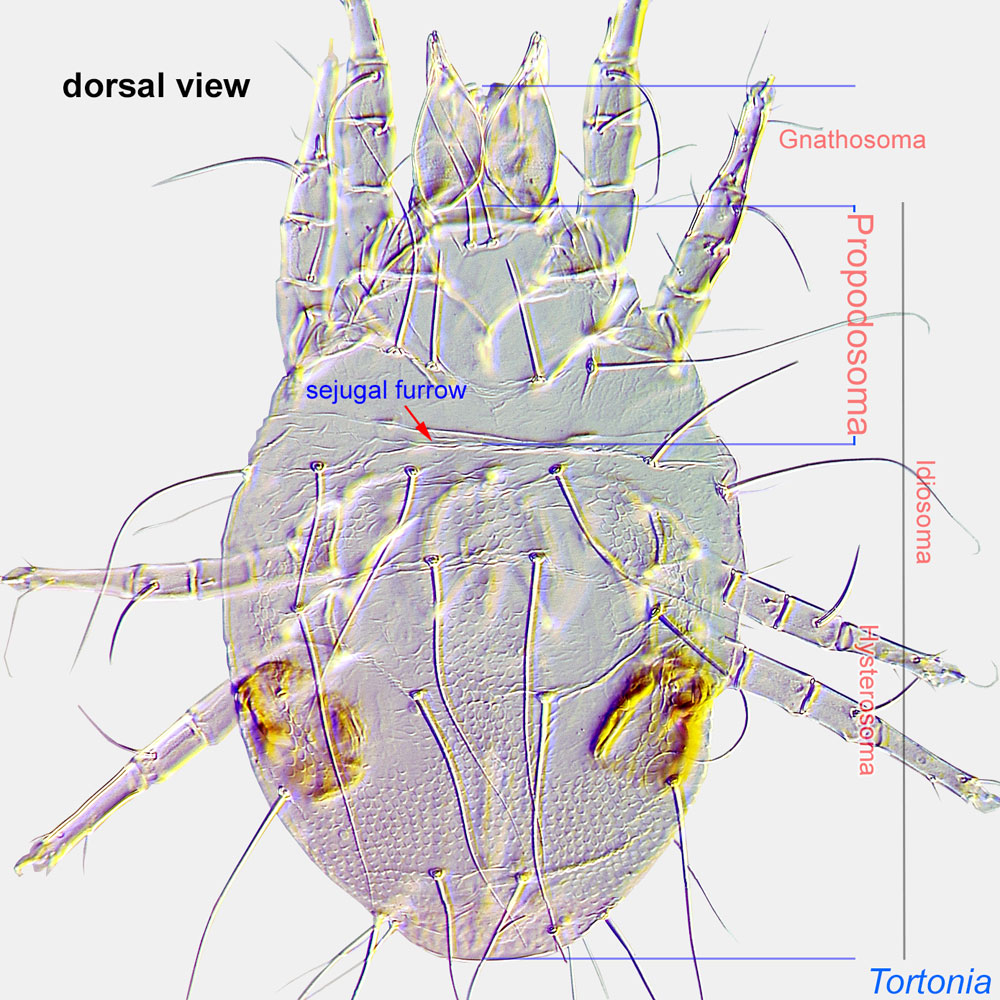 (Fig. 1). Three pairs of propodosomal dorsal setae (Figs. 1, 3). Leg I four-segmented, with tarsustarsus:
(Fig. 1). Three pairs of propodosomal dorsal setae (Figs. 1, 3). Leg I four-segmented, with tarsustarsus:
Terminal segment (also known as podomere or palpomere) of legs or palps. In Parasitoformes it can be subdivided into telotarsus and basitarsus.
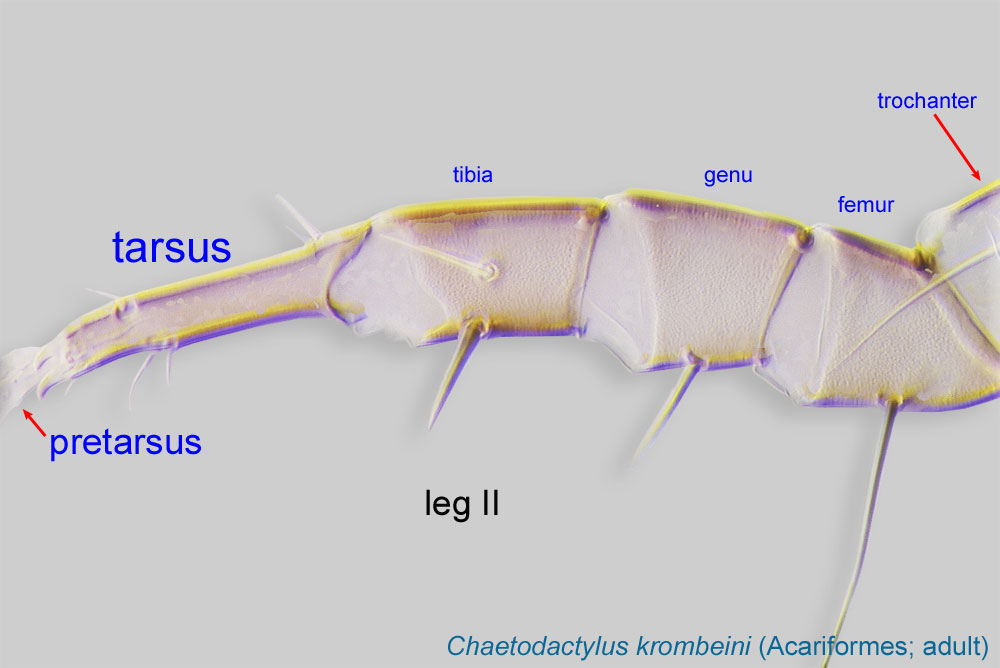 and tibiatibia:
and tibiatibia:
Leg or palp segment (also known as podomere or palpomere) between tarsus and genu.
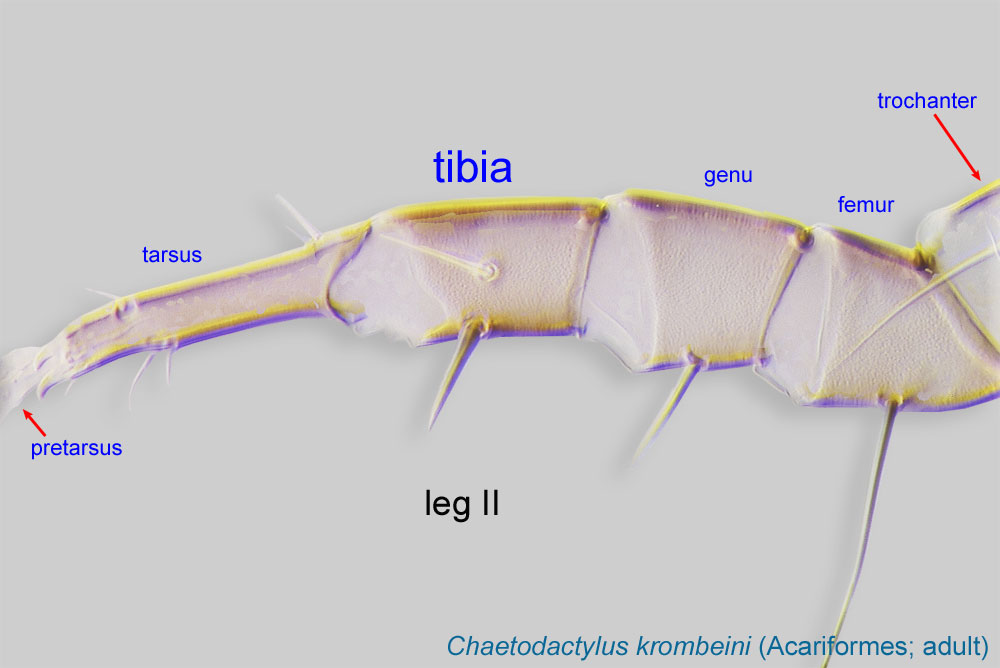 I fused forming tibiotarsus (Figs. 2, 4). Claw I large, striated (Figs. 1, 2, 4 ). Three pairs of setae on each coxaecoxa:
I fused forming tibiotarsus (Figs. 2, 4). Claw I large, striated (Figs. 1, 2, 4 ). Three pairs of setae on each coxaecoxa:
In Parasitiformes, most basal leg segment (or podomere) forming a joint with the body. Areas delimited by coxal apodemes are called coxal fields in Astigmata or coxisternal plates in Prostigmata.
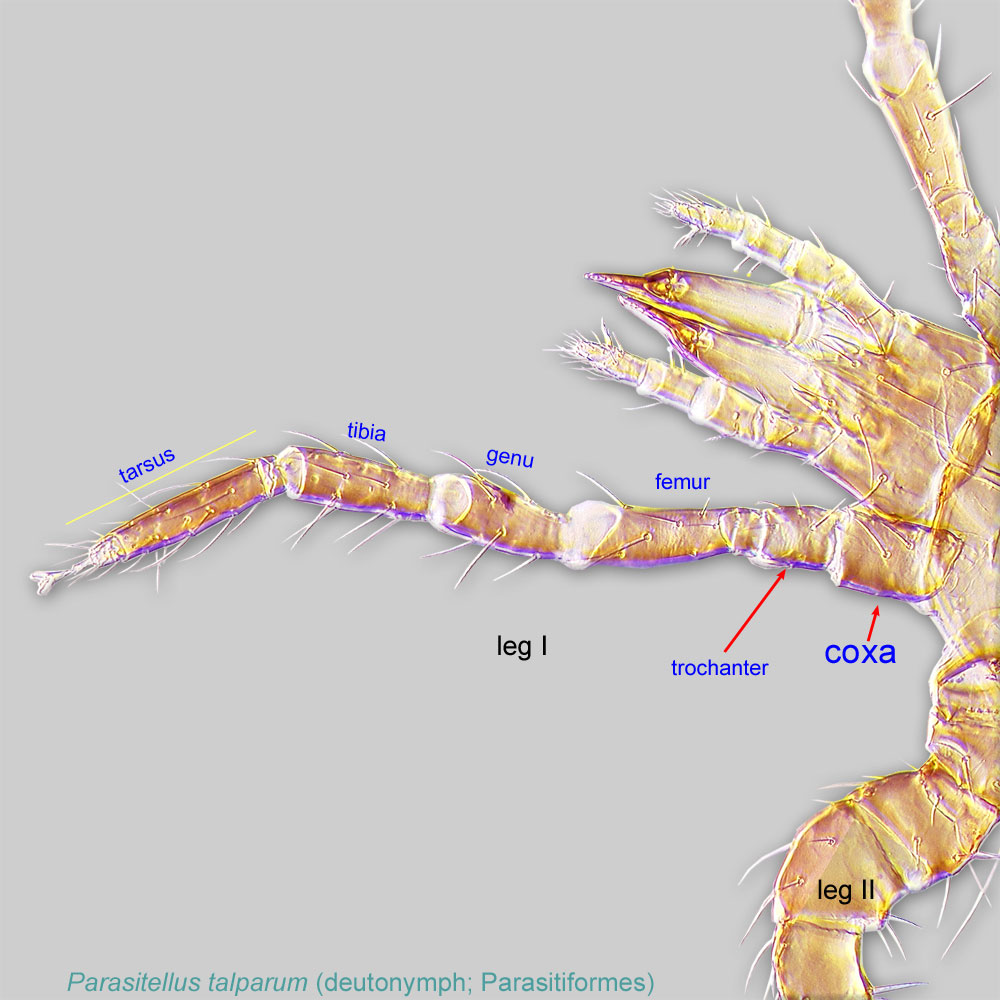 I-II (Fig. 4). Tarsustarsus:
I-II (Fig. 4). Tarsustarsus:
Terminal segment (also known as podomere or palpomere) of legs or palps. In Parasitoformes it can be subdivided into telotarsus and basitarsus.
 IV with claws (Fig. 1). Trochantertrochanter:
IV with claws (Fig. 1). Trochantertrochanter:
Leg or palp segment (also known as podomere or palpomere) between femur and coxa. In Acariformes this is the most basal movable leg segment (or podomere) forming a joint with the body.
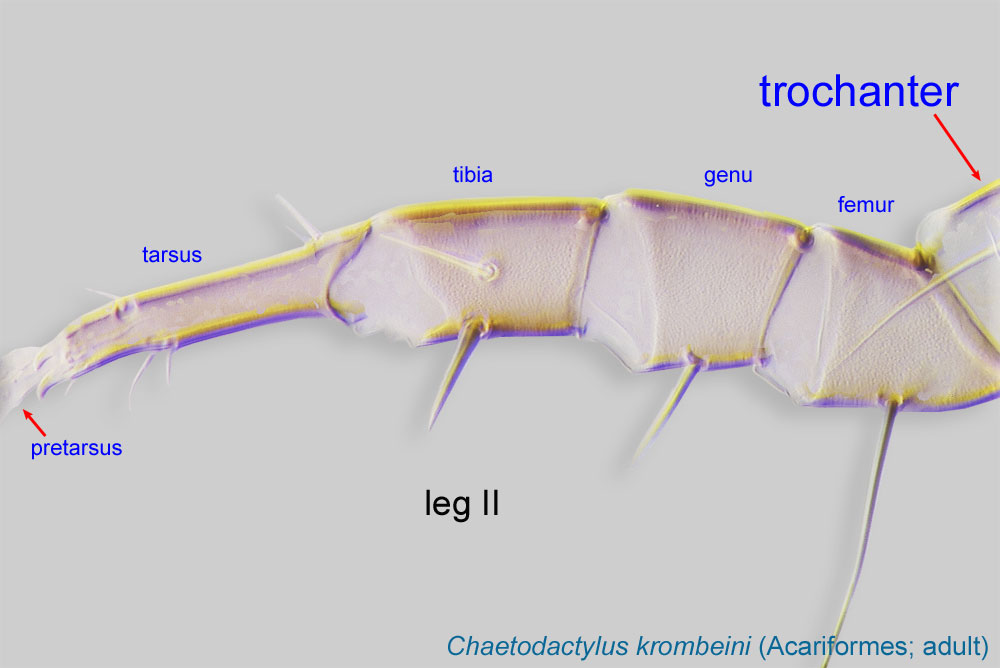 IV subquadrate (not triangular) (Fig. 2). Seta v’ on femurfemur:
IV subquadrate (not triangular) (Fig. 2). Seta v’ on femurfemur:
Leg or palp segment (also known as podomere or palpomere) between genu and trochanter. In ParasitIformes can be subdivided into telofemur and basifemur.
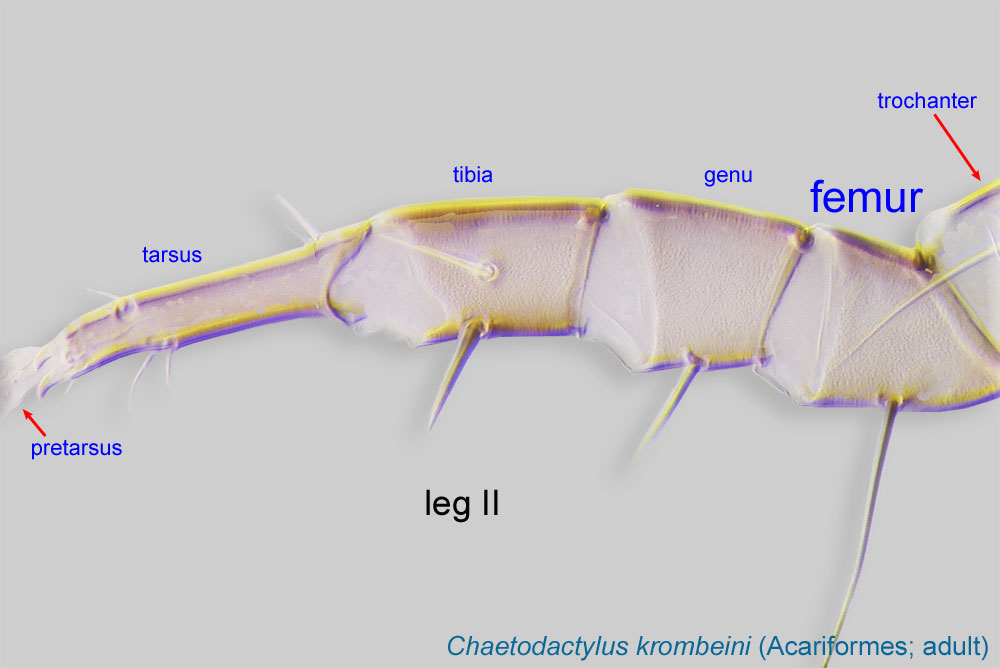 IV swordlike; seta pl’’ on tarsustarsus:
IV swordlike; seta pl’’ on tarsustarsus:
Terminal segment (also known as podomere or palpomere) of legs or palps. In Parasitoformes it can be subdivided into telotarsus and basitarsus.
 IV swordlike (Fig 2).
IV swordlike (Fig 2).
Dichotomous keys are available in Smiley, 1978Smiley, 1978:
Smiley, R. L. 1978. Taxonomic studies of Pygmephorus species from the western hemisphere, with a key to females and an overview of the current problems for classification (Acari: Pyemotidae and Pygmephoridae). International Journal of Acarology . 4 : 125-160. and Smiley and Whitaker, 1984Smiley and Whitaker, 1984:
Smiley, R. L. and J. O. Whitaker, Jr. 1984. Key to New and Old World Pygmephorus species and descriptions of six new species (Acari: Pygmephoridae). International Journal of Acarology 10:59-73..
Holarctic, Neotropical, Oriental, and Afrotropical regions. The record of a single species (Pygmephorus spinosus) from beehives is from Europe.
occasionally occurs in honey bee hives (Apis)
facultativefacultative:
can complete entire life cycle without bees or their close relative, wasps
This genus can also rarely be found in other habitats such as decaying logs, old straw, and manure. One holarctic species associated with many species of small rodents and insectivores, Pygmephorus spinosus, has been found in hives of the European honey bee Apis mellifera in Europe (Haragsim et al., 1987Haragsim et al., 1987:
Haragsim, O., K. Samšiňák amp; E. Vobrázková. 1978. The mites inhabiting the bee hives in ČSR. Zeitschrift für Angewandte Entomologie. 87: 52-67.).